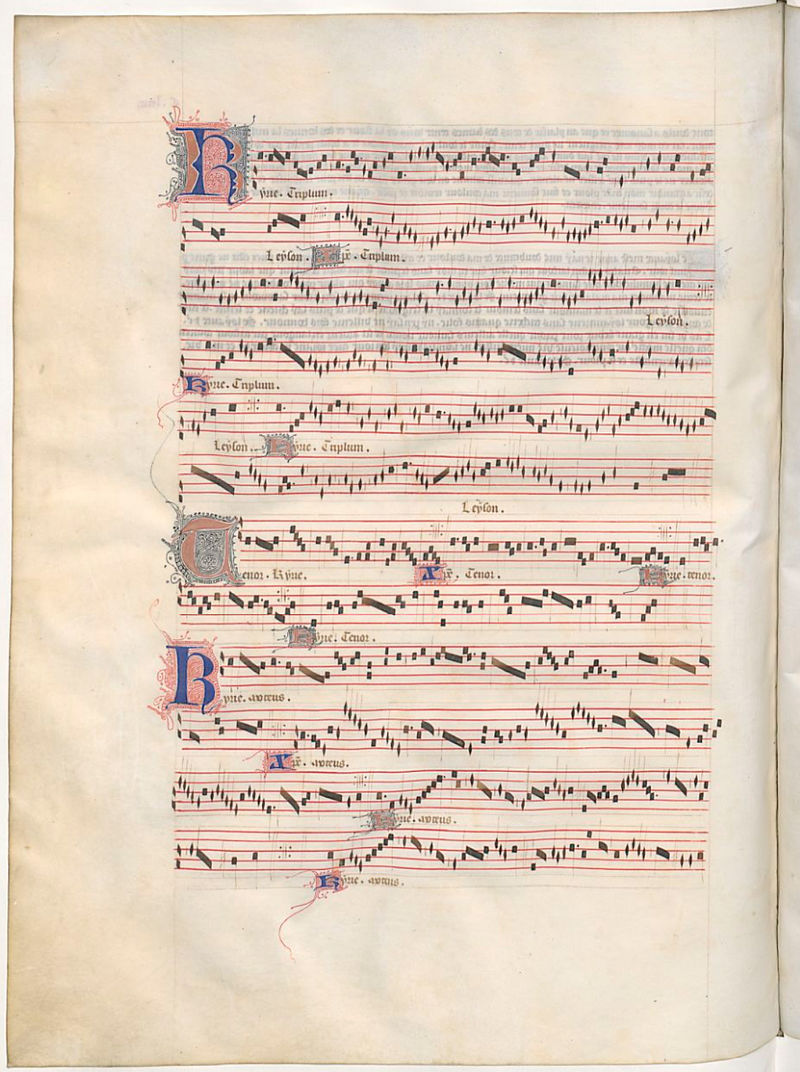matican mass XVII
Music Monday: Messe de Nostre Dame 1360s

Image Credit: wikipedia.org &
wikimedia.org
Author: manuscrito sob a
supervisão do autor
I’m still digging around in the old stuff. I found this piece and thought it interesting.
From Wikipedia:
Messe de Nostre Dame (Mass of Our Lady) is a polyphonic mass composed before 1365 by French poet and composer Guillaume de Machaut […]. Widely regarded as one of the masterpieces of medieval music, and of all religious music, it is historically notable as the earliest complete setting of the Ordinary of the Mass attributable to a single composer […].
It’s Structure:
The Messe de Nostre Dame consists of 5 movements: the Kyrie (Eleison…”Lord, have mercy”), Gloria (in Excelsis Deo…”Glory to God in the highest”), Credo (Nicene Creed), Sanctus (“Holy”) and Agnus Dei (“Lamb of God”), followed by the dismissal Ite, missa est (Mass Response: Deo Gratias or “Thanks be to God”). The tenor of the Kyrie is based on Vatican Kyrie IV, the Sanctus and Agnus correspond to Vatican Mass XVII and the Ite is on Sanctus VIII. The Gloria and Credo have no apparent chant basis, although they are stylistically related to one another. Machaut’s Messe de Nostre Dame is for four voices rather than the more common three. Machaut added a contratenor voice that moved in the same low range as the tenor, sometimes replacing it as the lowest voice.
The information is rather wonky and, not only have I never studied music theory, my education on Catholic Mass is limited to a short stint as a member in an Anglican church in Austin, TX, a decade ago. That being said, what I find fascinating about this composition is that Machaut combined each part into an artistic whole, the earliest known example of it unified. Previously, the items were performed non-consecutively and, separated by prayers and chants.
[Instrumental Version of The Kyrie by Guillaume de Machaut]
[Modern Take on Kyrie by Patrick Lenk]
And, just because I could, I’m ending with Mr. Mister.